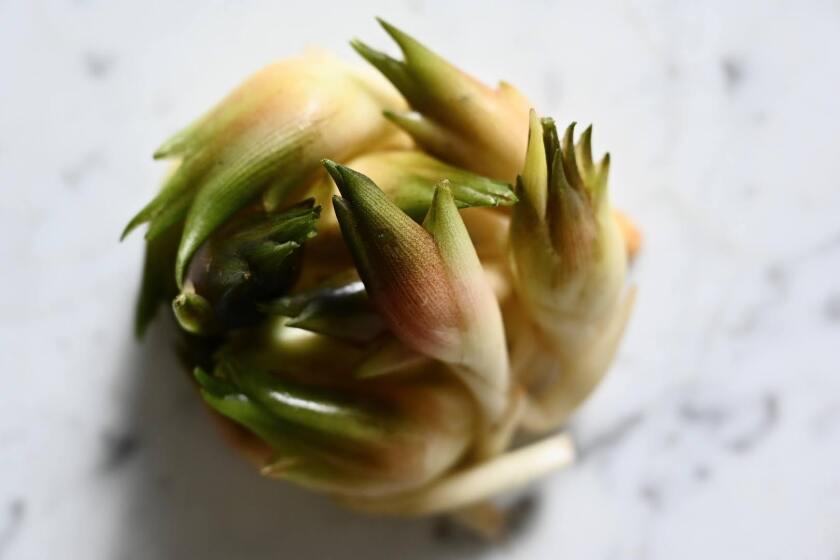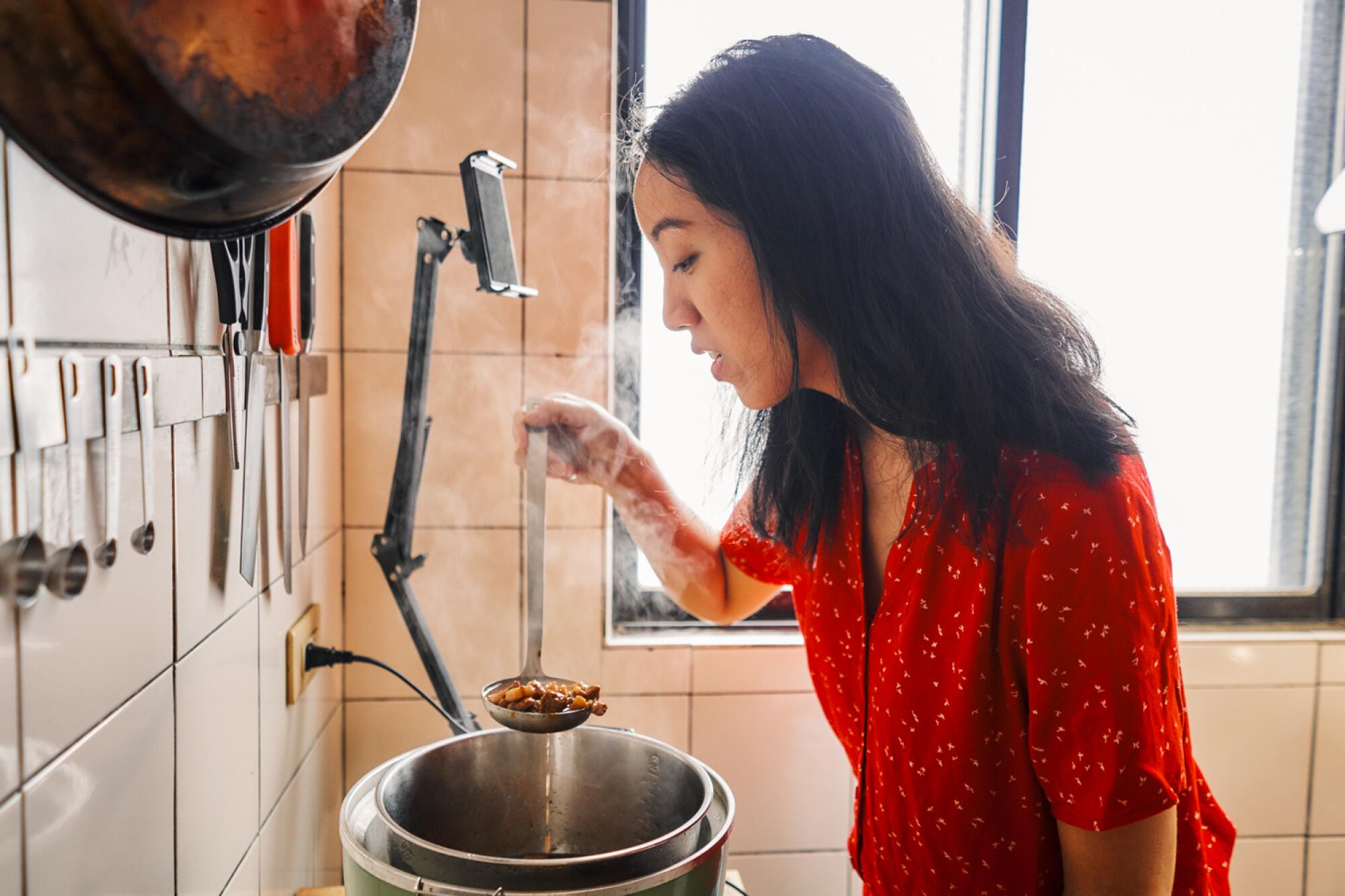
- Share via
New Taipei City — Armed only with an address in Chinese and a link to Google Maps, I exit the nearest Taipei Metro station and grip my iPhone like a divining rod hoping to locate an apartment in the Xindian district just outside central Taipei. The apartment belongs to Clarissa Wei, the author of a new cookbook, “Made in Taiwan: Recipes and Stories of the Island Nation.”
All this searching makes me glad I had devoured a Taiwanese breakfast: baozi bulging with minced pork and chives, paired with a traditional warm soy milk purchased from a Kaohsiung food stall before I boarded the high-speed train. I was born in Taipei, and this is my first visit back since I moved with my family to the United States when I was 2. I have no memories of the city, but there is an aura of familiarity.
The streets and domiciles appear to have organically sprouted rather than resulting from any civic planning. The buildings are in a makeshift style with narrow roads and alleys leading to them, winding as naturally as a brook within nearby Dongyanshan, or Eastern Eye Mountain.
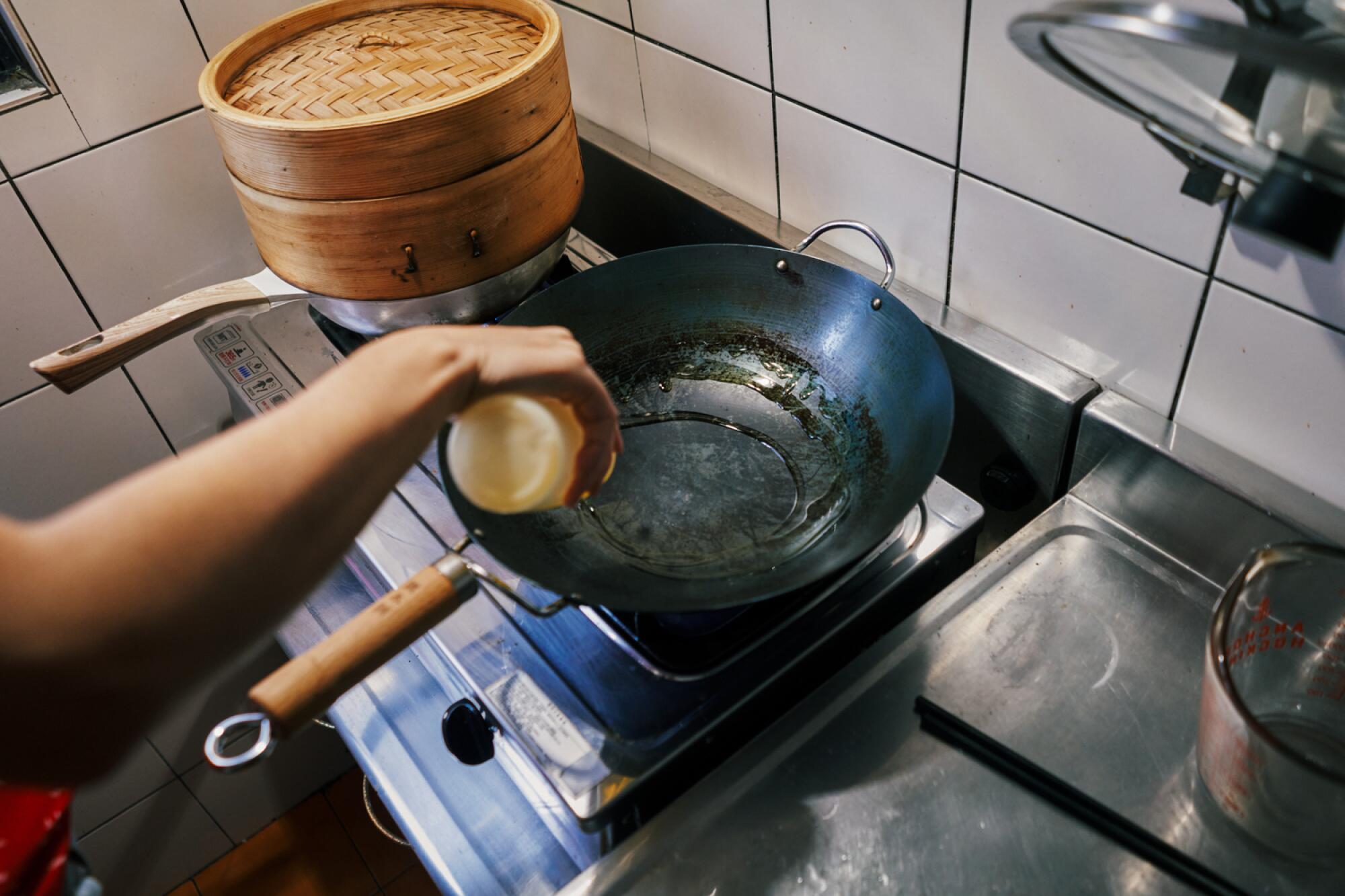
Now, I’ve come to my birthplace from Los Angeles to interview an expat born in California about her Taiwanese cookbook. I’ve never been to Wei’s tangle of a neighborhood before, but I somehow feel a comforting connection to the area.
By the time I reach Wei’s sixth-floor walk-up, I’m famished. Wei opens the door and says, “I hope you’re hungry, because I have a lot of food for you.”
Never was there a more delicious greeting.
“Your relatives came over during the ’50s, right?” asks Wei.
Yes, I respond.
“So your experience with Taiwanese food is probably different from mine,” she says.
My parents met in Taipei in the north of Taiwan. However, they were both born in China and relocated along with an influx of Nationalist Chinese in the 1940s. Meanwhile, the families of Wei and her recipe developer, Ivy Chen, hail from the south in Tainan. Both of their families go back five to six generations, more than 200 years of living on the island, a mere 100 miles or so from southeastern China.
Wei leads me into her tiny kitchen, roughly the size of a small carport. To my left on a butcher block cart, the mise en place for savory rice pudding sits neatly. On my right, vivid blue flames hiss from a double-burner cooktop, blasting a well-seasoned wok that beckons to the diced pork belly.
Her pantry is a rack replete with many of the seasonings, staples and condiments listed in her cookbook. A jug of vegetable oil, a container of MSG, bottles of different-hued vinegars and a tin of shacha sauce send me back to my mother’s pantry in the U.S., where she attempted to replicate Taiwanese ingredients as closely as possible with what was available in 1970s Los Angeles.
We’re a year into the pandemic, and San Gabriel Valley restaurants need our business
These staple ingredients are the foundation for many Taiwanese recipes. Without them, the dishes aren’t faithful to their origins, their true identity, as Wei explains.
“If you Google any Taiwanese recipe from a U.S. website, you’ll notice the use of Chinese ingredients like Shaoxing wine, light and dark soy sauce,” she says. “We don’t have that in Taiwan. It’s not anyone’s fault. It’s just because that’s where you grew up, and you go to the Asian supermarket [in the U.S.] and get what’s there. After a couple of generations, you just kind of lose [the original ingredients]. People default to Chinese ingredients because they feel it’s the same thing.”
Taiwanese cuisine is tied to patterns of migration and colonization and includes notable Hakka and Fujianese influences and later from Japan, which ruled the island from 1895 to 1945. Taiwanese soy sauce such as the Kimlan brand and Japanese soy sauce are more similar to each other, with milder notes than Chinese soy sauce. If Taiwanese michiu, cooking rice wine, isn’t readily available, instead of using Chinese Shaoxing wine, Wei suggests Japanese cooking sake as a better substitute. Boldly flavored Shaoxing wine and Chinese soy sauces affect the taste, especially for long braises, making it stronger rather than lighter.
For Wei, adherence to specific Taiwanese ingredients goes beyond flavor. She believes using inaccurate ingredients has a detrimental effect on Taiwanese culture in general and food in particular, as it dilutes the intention of the food. When a recipe replaces Taiwanese products with Chinese analogues, is it no longer Taiwanese?
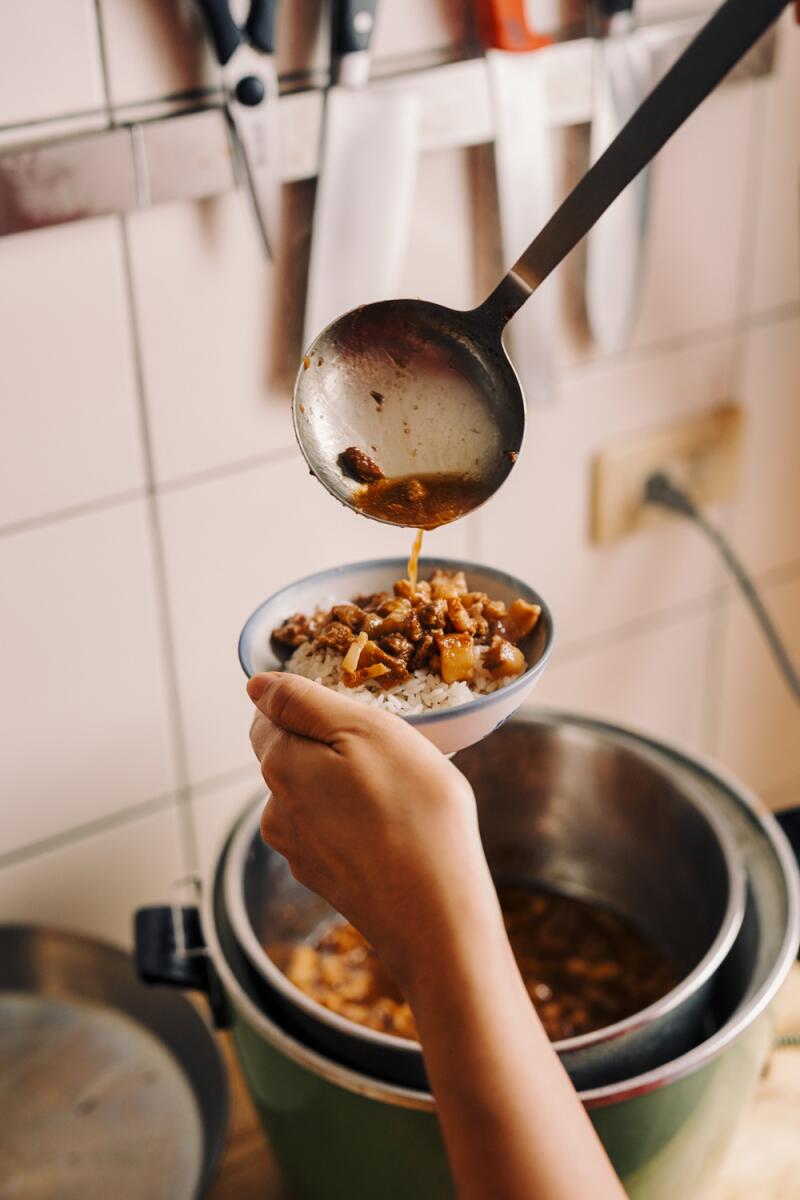
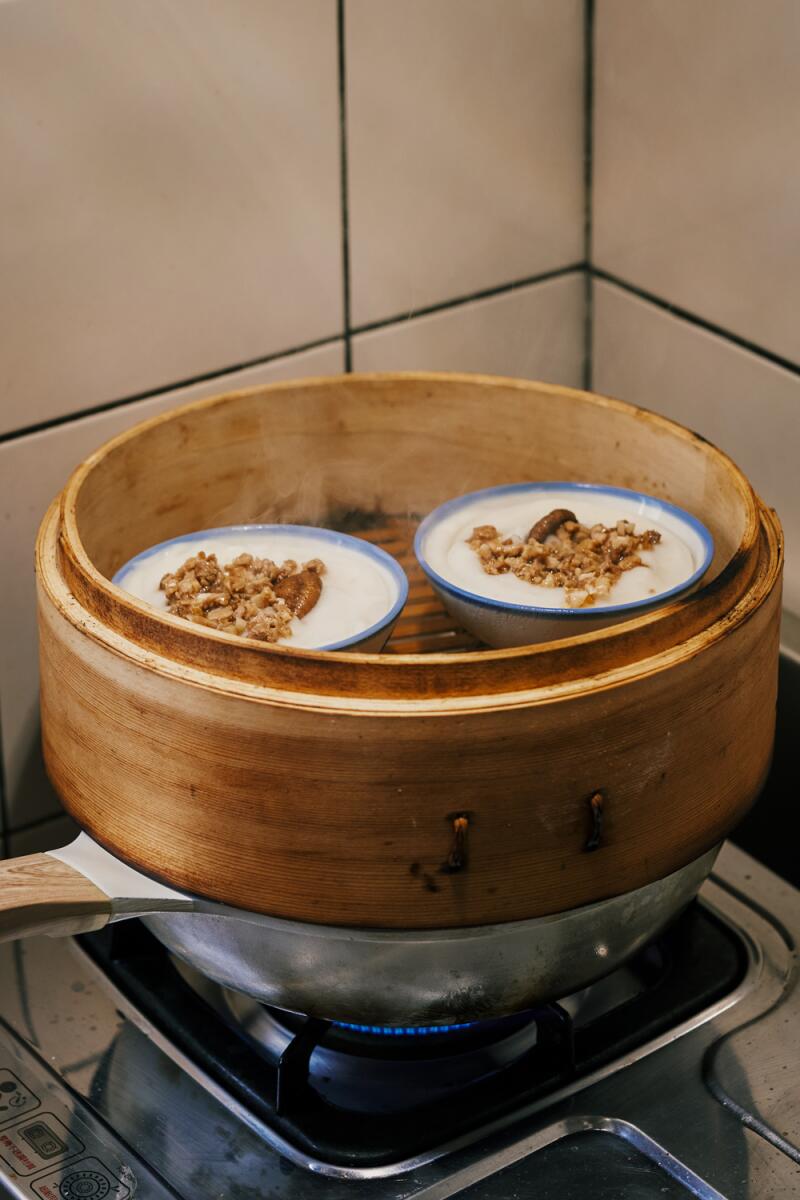
Pork belly is plated over rice. Two bowls of savory rice pudding, ready to be steamed. (An Rong Xu / For The Times)
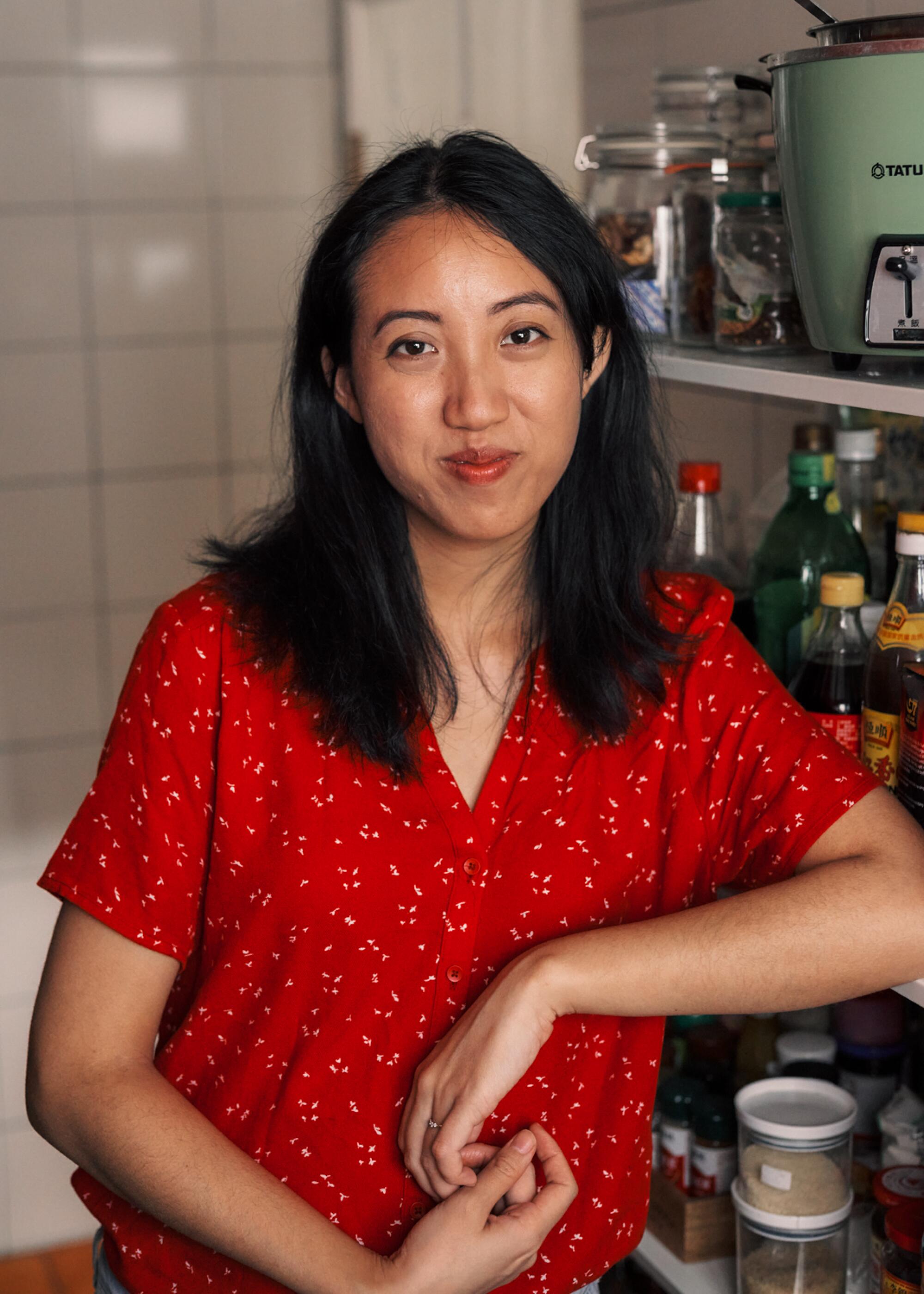
Taiwan is at a flashpoint. China views Taiwan, which is self-ruled, as a breakaway province that eventually Beijing will control. When threats from China are on the uptick, there’s a reaction by mainly the youth to become more Taiwanese, perhaps defiantly Taiwanese.
This returning to Taiwan’s roots extends beyond food. There’s a small revival of learning the Taiwanese language, part of a movement involving fashion, architecture and design.“You have to live here and know young people in order to see it,” says Wei.
Braised Minced Pork Belly
In her cookbook, she writes, “While many of our dishes have Chinese roots or were brought over by immigrants from China, physical and diplomatic isolation, entirely separate governments, and, most important, a nascent yet powerful Taiwanese identity movement in the face of cross-strait political tensions have given shape to a redefined food culture that’s completely and unquestionably unique.”
There’s also a new appreciation for old favorites. Kueh, for example. It’s a traditional pastry that’s commonly (but not always) created with rice, and it can be sweet or savory. Wei’s cookbook includes a recipe for a sweet red bean kueh, molded to look like a tortoise, which represents longevity.
Longevity, however, may be elusive for some of the recipes Wei attempts to immortalize in her cookbook. Pastries like kueh are taken for granted, edible relics at risk of fading away in favor of the latest French-inspired cakes and macarons shimmering nowadays in Taiwanese patisserie cases.
Chef Ki Kim took a trip to his native South Korea to reconnect with the ingredients that drive his seasonal menus at Koreatown’s Kinn. He shares what he’s using for his spring-into-summer menu.
Preserving these humble foods is a significant motivation for Wei’s efforts to seek out and feature in her cookbook the people, usually home cooks, mostly seniors, who are the stewards of Taiwan’s kitchen culture and whose knowledge is in danger of disappearing. It’s a battle against time.
An elderly woman named Chung Kuo Ming-Chin, whom Wei calls Mama Chung, is a master of Hakka cuisine, the foodways of a cultural group from China. When Mama Chung is cooking, fans travel hours to her mountainside abode for a homemade meal. There’s also Aeles Lrawbalrate, an indigenous Austronesian woman of the Rukai people in Taiwan. She talks about “colonialism almost destroying” her culture, with the last line of defense being food. Her recipe for smoked betel leaf pork sausage is an uncommon delicacy.
Some traditional recipes are passed down like folklore, orally or by doing, with little actually written down. As mentioned in the cookbook, Wei’s recipe developer, Chen, “spent her formative years in the countryside and watched her grandmother cater all sorts of now-antiquated religious festivities.” Her grandfather had a rice vermicelli factory. She was constantly around food traditions that were formed from scratch. She asked questions, observed and learned.

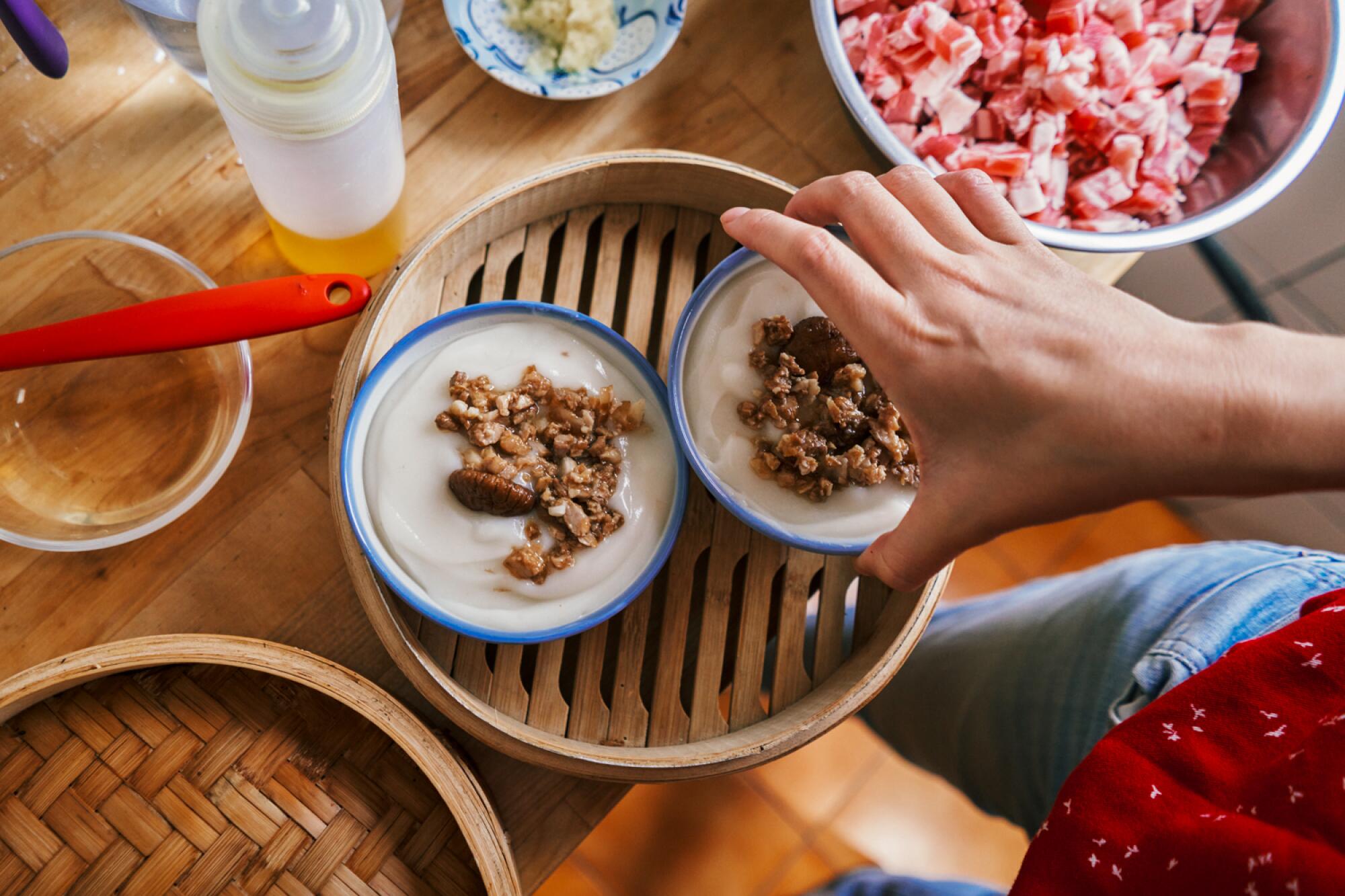
Chen has lived her entire life in Taiwan, and Wei thinks of her as the auntie she never had who can answer any question about Taiwanese food. Chen recognizes the value of having a Taiwanese American advocate.
“It’s good [that Clarissa] promotes Taiwan food and culture with her good English,” Chen tells me.
Wei’s interest in Taiwanese food was gradual. Early in the years of grassroots bloggers and up-and-coming food writers, she made a name for herself in Los Angeles and caught the notice of food critic Jonathan Gold, who recruited her as one of his trusted food scouts. When Wei moved overseas to Hong Kong and began covering more Chinese cuisine and, occasionally, politics, it dawned on her that Taiwanese and Chinese food are as distinct from one another as Malaysian food is from Chinese food, which is itself a myriad of many regional cuisines.
“The whole reason why Taiwanese food is conflated with Chinese food was because in the 1950s, the Chinese Nationalist government came here, and they dominated the culture even though they only made up 15% of the population. So there’s this narrative that was put into the schools,” Wei says.
Golden crullers, dipped in soy or served with rice porridge, are more than breakfast — they’re a symbol of resilience
Wei deliberately organized the more than 100 recipes in “Made in Taiwan” so that the reader sets off on a tour of the island, placing the food in the context of how it may be experienced in the nation. Scallion pancakes and fried crullers are in the breakfast chapter. Under the Tainan section, you’ll find braised minced pork belly and oyster omelets. If you’re curious about the grub at Taiwan’s famous night markets, check out the pages featuring recipes for fried stinky tofu, sticky rice sausage and popcorn chicken.
Taiwanese diners have gradually become more aware of the distinction between Taiwanese and Chinese cuisines. Chinese food in Taiwan hasn’t evolved with the decades, as if stuck in a time warp. This is because Chinese influence and immigration has waned.

Taiwan’s odyssey to establish its distinct identity is manifold and complex. It won’t be worldwide recognition of any single component of the culture, history, politics or food that accomplishes this but a combination of them all. Certainly, Wei and Chen are leading the charge on the food front with “Made in Taiwan.”
Without preparing a single dish, readers will come away with a clearer picture of Taiwan and a better comprehension of its relationship with China and the rest of the world. And, what’s more, using the recipes can be an exercise in creating comfort — an antidote to the cross-strait tensions chronicled in the book. A simple bowl of braised minced pork belly over rice can be a soothing embrace — or a small act of defiance during volatile times.
“Our identity is constantly changing. I could not have written my book 20 years ago. It wouldn’t exist. It would not make sense, because Taiwanese identity was very different back then,” Wei says. “This book is a reflection of what it is now.”
More to Read
Eat your way across L.A.
Get our weekly Tasting Notes newsletter for reviews, news and more.
You may occasionally receive promotional content from the Los Angeles Times.


